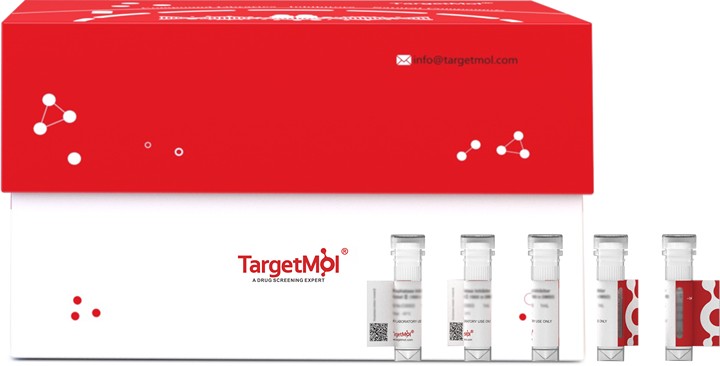- Remove All
 Your shopping cart is currently empty
Your shopping cart is currently empty
Harmonin/USH1C Protein, Human, Recombinant (His)
Harmonin, also known as Antigen NY-CO-38 / NY-CO-37, Autoimmune enteropathy-related antigen AIE-75, Protein PDZ-73, Renal carcinoma antigen NY-REN-3, Usher syndrome type-1C protein and USH1C, is a protein that is expressed in small intestine, colon, kidney, eye and weakly in pancreas. USH1C is expressed also in vestibule of the inner ear. USH1C contains 3 PDZ (DHR) domains. USH1C may be involved in protein-protein interaction. Defects in USH1C are the cause of Usher syndrome type 1C (USH1C), also known as Usher syndrome type I Acadian variety. USH is a genetically heterogeneous condition characterized by the association of retinitis pigmentosa and sensorineural deafness. Age at onset and differences in auditory and vestibular function distinguish Usher syndrome type 1 (USH1), Usher syndrome type 2 (USH2) and Usher syndrome type 3 (USH3). Defects in USH1C are also the cause of deafness autosomal recessive type 18 (DFNB18) which is a form of sensorineural hearing loss. Sensorineural deafness results from damage to the neural receptors of the inner ear, the nerve pathways to the brain, or the area of the brain that receives sound information.

Harmonin/USH1C Protein, Human, Recombinant (His)
| Pack Size | Price | Availability | Quantity |
|---|---|---|---|
| 5 μg | $68 | 7-10 days | |
| 10 μg | $108 | 7-10 days | |
| 20 μg | $178 | 7-10 days | |
| 50 μg | $359 | 7-10 days | |
| 100 μg | $696 | 7-10 days | |
| 200 μg | $1,060 | 7-10 days | |
| 500 μg | $2,230 | 7-10 days | |
| 1 mg | $4,530 | 7-10 days |
Product Information
| Biological Activity | Activity testing is in progress. It is theoretically active, but we cannot guarantee it. If you require protein activity, we recommend choosing the eukaryotic expression version first. |
| Description | Harmonin, also known as Antigen NY-CO-38 / NY-CO-37, Autoimmune enteropathy-related antigen AIE-75, Protein PDZ-73, Renal carcinoma antigen NY-REN-3, Usher syndrome type-1C protein and USH1C, is a protein that is expressed in small intestine, colon, kidney, eye and weakly in pancreas. USH1C is expressed also in vestibule of the inner ear. USH1C contains 3 PDZ (DHR) domains. USH1C may be involved in protein-protein interaction. Defects in USH1C are the cause of Usher syndrome type 1C (USH1C), also known as Usher syndrome type I Acadian variety. USH is a genetically heterogeneous condition characterized by the association of retinitis pigmentosa and sensorineural deafness. Age at onset and differences in auditory and vestibular function distinguish Usher syndrome type 1 (USH1), Usher syndrome type 2 (USH2) and Usher syndrome type 3 (USH3). Defects in USH1C are also the cause of deafness autosomal recessive type 18 (DFNB18) which is a form of sensorineural hearing loss. Sensorineural deafness results from damage to the neural receptors of the inner ear, the nerve pathways to the brain, or the area of the brain that receives sound information. |
| Species | Human |
| Expression System | E. coli |
| Tag | N-His |
| Accession Number | Q9Y6N9-1 |
| Synonyms | Usher syndrome 1C (autosomal recessive, severe),ush1cpst,PDZD7C,PDZ-73/NY-CO-38,PDZ-73,PDZ73,PDZ-45,NY-CO-38,NY-CO-37,DFNB18A,DFNB18,AIE-75 |
| Construction | A DNA sequence encoding the native human USH1C (Q9Y6N9-1) (Met 1-Phe 552) was expressed, with a polyhistide tag at the N-terminus. Predicted N terminal: Met |
| Protein Purity | ≥ 90 % as determined by SDS-PAGE |
| Molecular Weight | 63.7 kDa (predicted); 63.7 kDa (reducing conditions) |
| Endotoxin | Please contact us for more information. |
| Formulation | Supplied as sterile 50 mM Tris, 20% glycerol, pH 7.7. |
| Reconstitution | A Certificate of Analysis (CoA) containing reconstitution instructions is included with the products. Please refer to the CoA for detailed information. |
| Stability & Storage | It is recommended to store the product under sterile conditions at -20°C to -80°C. Samples are stable for up to 12 months. Please avoid multiple freeze-thaw cycles and store products in aliquots. |
| Shipping | Shipping with blue ice. |
| Research Background | Harmonin, also known as Antigen NY-CO-38 / NY-CO-37, Autoimmune enteropathy-related antigen AIE-75, Protein PDZ-73, Renal carcinoma antigen NY-REN-3, Usher syndrome type-1C protein and USH1C, is a protein that is expressed in small intestine, colon, kidney, eye and weakly in pancreas. USH1C is expressed also in vestibule of the inner ear. USH1C contains 3 PDZ (DHR) domains. USH1C may be involved in protein-protein interaction. Defects in USH1C are the cause of Usher syndrome type 1C (USH1C), also known as Usher syndrome type I Acadian variety. USH is a genetically heterogeneous condition characterized by the association of retinitis pigmentosa and sensorineural deafness. Age at onset and differences in auditory and vestibular function distinguish Usher syndrome type 1 (USH1), Usher syndrome type 2 (USH2) and Usher syndrome type 3 (USH3). Defects in USH1C are also the cause of deafness autosomal recessive type 18 (DFNB18) which is a form of sensorineural hearing loss. Sensorineural deafness results from damage to the neural receptors of the inner ear, the nerve pathways to the brain, or the area of the brain that receives sound information. |
Dose Conversion
Sci Citations
Calculator
Tech Support

Copyright © 2015-2025 TargetMol Chemicals Inc. All Rights Reserved.


